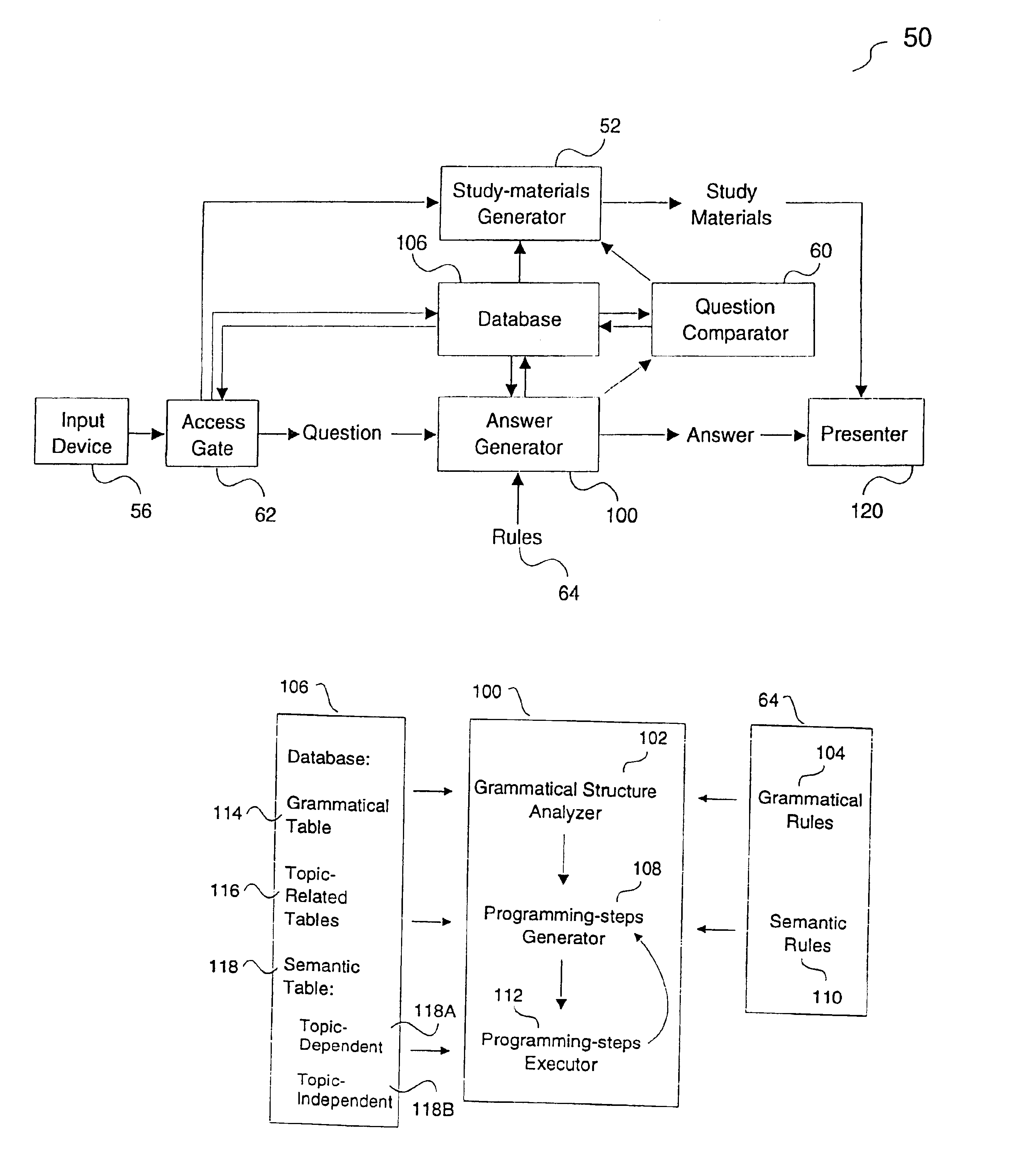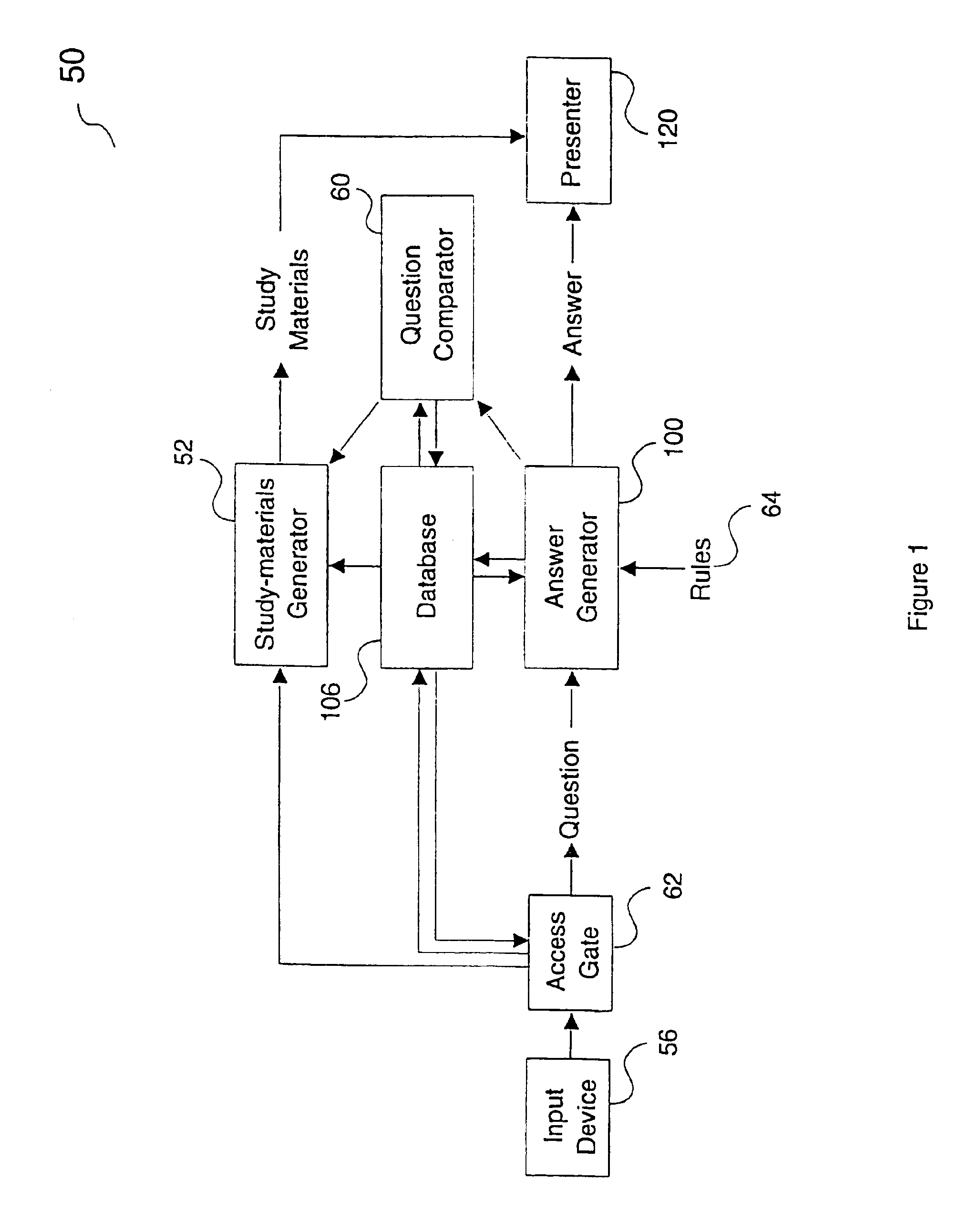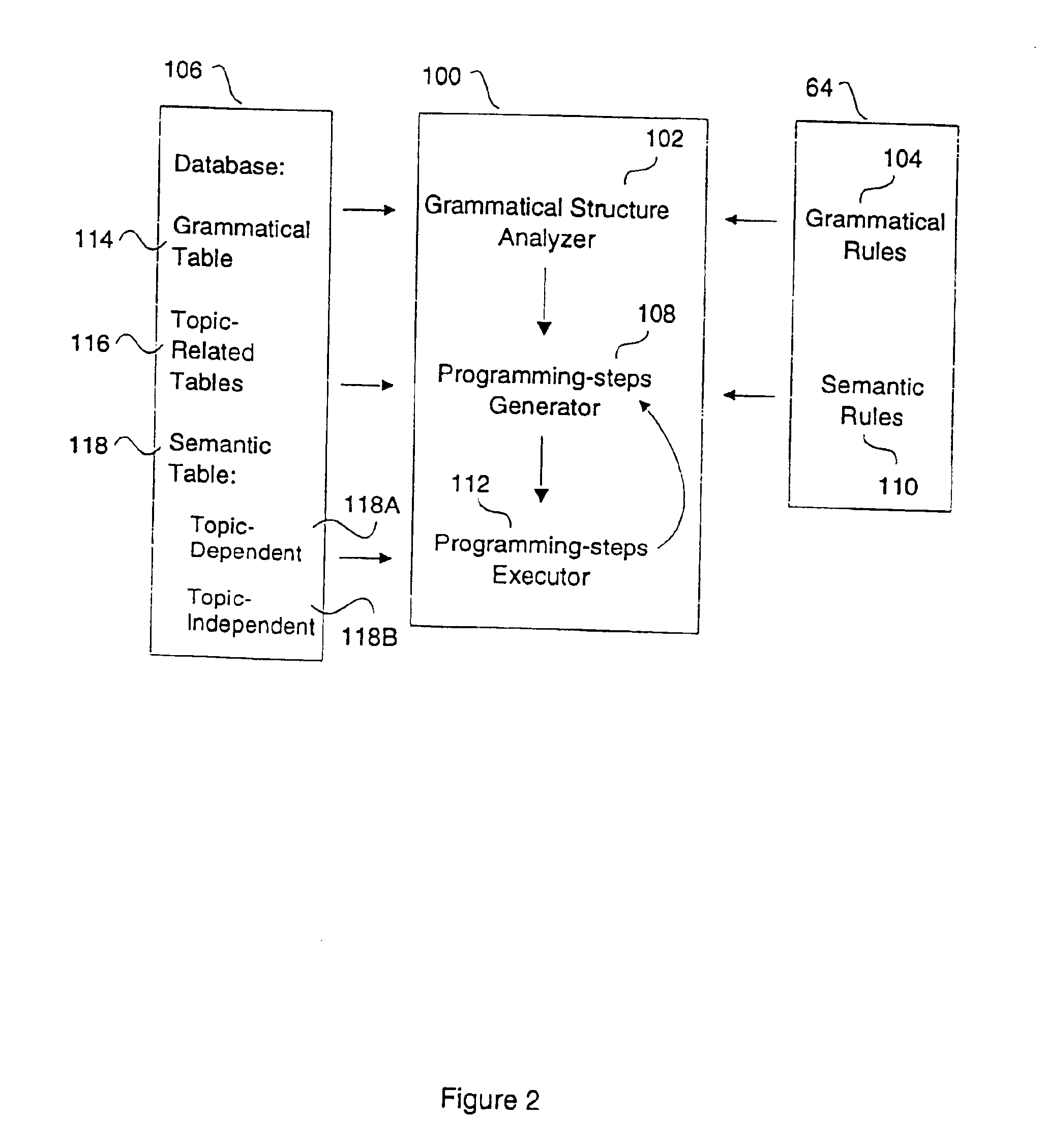Learning method and system based on questioning
a learning method and questioning technology, applied in the field of education, can solve the problems of not having the luxury of having a question-and-answer dialog with the computer, not being able to comprehend everything, and not having the ability to fill gaps in our understanding, so as to achieve the effect of controlling the learning process and setting the learning pa
- Summary
- Abstract
- Description
- Claims
- Application Information
AI Technical Summary
Benefits of technology
Problems solved by technology
Method used
Image
Examples
embodiment 150
FIG. 3A shows one physical embodiment 150 implementing one embodiment of the invention, preferably in software and hardware. The embodiment 150 includes a server computer 152 and a number of client computers, such as 154, which can be a personal computer. Each client computer communicates to the server computer 152 through a dedicated communication link, or a computer network 156.
FIG. 3B shows one embodiment of a client computer 154. It typically includes a bus 159 connecting a number of components, such as a processing unit 160, a main memory 162, an I / O controller 164, a peripheral controller 166, a graphics adapter 168, a circuit board 180 and a network interface adapter 170. The I / O controller 164 is connected to components, such as a harddisk drive 172 and a floppy disk drive 174. The peripheral controller 166 can be connected to one or more peripheral components, such as a keyboard 176 and a mouse 182. The graphics adapter 168 can be connected to a monitor 178. The circuit boa...
embodiment 50
Different elements in the present invention may be in different physical components. For example, the input device 56, the presenter 120, the grammatical structure analyzer 102 and the grammatical rules may be in a client computer; and the study-materials generator 52, the question comparator 60, the database 106, the programming-steps generator 108 and the program executor 112 may reside in a server computer. In another embodiment, the database is in the server computer; and the input device 56, the study-materials generator 52, the question comparator 60, the grammatical structure analyzer 102, the programming-steps generator 108, the program executor 112 and the rules reside in a client computer. Yet in another embodiment, the embodiment 50 is in a client computer.
In this invention, the subject can be broad or narrow. In one embodiment, the subject can cover mathematics or history, or it can cover the JAVA programming language. In another embodiment, the subject covers informatio...
embodiment 500
The embodiment shown in FIG. 2 can answer an infinite number of questions. FIG. 12 illustrates another embodiment 500 of the answer generator, which provides answers to a finite number of questions, but requires fewer steps to generate answers as compared to the embodiment shown in FIG. 2. Also, the answer generator 500 can answer non-natural-language questions, and grammatically-context-dependent questions. In this embodiment, the database 106 includes a questions table, which contains many questions, each with its corresponding answer. A question matching engine 529 compares the question entered with questions in the database. An answer retriever 539 retrieves the answer to the question in the database that matches the entered question.
FIG. 13 shows one set of steps 550 for the present embodiment. The question matching engine 529 compares (Step 552) the entered question with questions in the database 106. If there is a match with any one of them, the answer retriever 639 retrieves...
PUM
 Login to View More
Login to View More Abstract
Description
Claims
Application Information
 Login to View More
Login to View More - R&D
- Intellectual Property
- Life Sciences
- Materials
- Tech Scout
- Unparalleled Data Quality
- Higher Quality Content
- 60% Fewer Hallucinations
Browse by: Latest US Patents, China's latest patents, Technical Efficacy Thesaurus, Application Domain, Technology Topic, Popular Technical Reports.
© 2025 PatSnap. All rights reserved.Legal|Privacy policy|Modern Slavery Act Transparency Statement|Sitemap|About US| Contact US: help@patsnap.com



